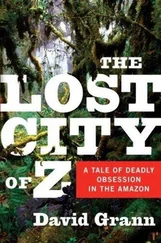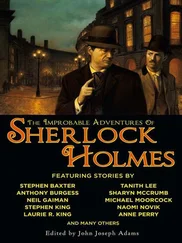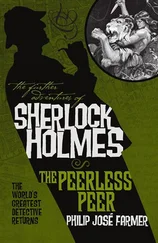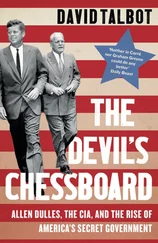In recent years, though, questions have mounted over whether the system is fail-safe. Since 1976, more than a hundred and thirty people on death row have been exonerated. DNA testing, which was developed in the eighties, saved seventeen of them, but the technique can be used only in rare instances. Barry Scheck, a co-founder of the Innocence Project, which has used DNA testing to exonerate prisoners, estimates that about eighty per cent of felonies do not involve biological evidence.
In 2000, after thirteen people on death row in Illinois were exonerated, George Ryan, who was then governor of the state, suspended the death penalty. Though he had been a longtime advocate of capital punishment, he declared that he could no longer support a system that has “come so close to the ultimate nightmare-the state’s taking of innocent life.” Former Supreme Court Justice Sandra Day O’Connor has said that the “execution of a legally and factually innocent person would be a constitutionally intolerable event.”
Such a case has become a kind of grisly Holy Grail among opponents of capital punishment. In his 2002 book “The Death Penalty,” Stuart Banner observes, “The prospect of killing an innocent person seemed to be the one thing that could cause people to rethink their support for capital punishment. Some who were not troubled by statistical arguments against the death penalty-claims about deterrence or racial disparities-were deeply troubled that such an extreme injustice might occur in an individual case.” Opponents of the death penalty have pointed to several questionable cases. In 1993, Ruben Cantu was executed in Texas for fatally shooting a man during a robbery. Years later, a second victim, who survived the shooting, told the Houston Chronicle that he had been pressured by police to identify Cantu as the gunman, even though he believed Cantu to be innocent. Sam Millsap, the district attorney in the case, who had once supported capital punishment (“I’m no wild-eyed, pointy-headed liberal”), said that he was disturbed by the thought that he had made a mistake.
In 1995, Larry Griffin was put to death in Missouri, for the drive-by shooting of a drug dealer. The case rested largely on the eyewitness testimony of a career criminal named Robert Fitzgerald, who had been an informant for prosecutors before and was in the witness-protection program. Fitzgerald maintained that he happened to be at the scene because his car had broken down. After Griffin’s execution, a probe sponsored by the N.A.A.C.P.’s Legal Defense and Educational Fund revealed that a man who had been wounded during the incident insisted that Griffin was not the shooter. Moreover, the first police officer at the scene disputed that Fitzgerald had witnessed the crime.
These cases, however, stopped short of offering irrefutable proof that a “legally and factually innocent person” was executed. In 2005, a St. Louis prosecutor, Jennifer Joyce, launched an investigation of the Griffin case, upon being presented with what she called “compelling” evidence of Griffin’s potential innocence. After two years of reviewing the evidence, and interviewing a new eyewitness, Joyce said that she and her team were convinced that the “right person was convicted.”
Supreme Court Justice Antonin Scalia, in 2006, voted with a majority to uphold the death penalty in a Kansas case. In his opinion, Scalia declared that, in the modern judicial system, there has not been “a single case-not one-in which it is clear that a person was executed for a crime he did not commit. If such an event had occurred in recent years, we would not have to hunt for it; the innocent’s name would be shouted from the rooftops.”
“My problems are simple,” Willingham wrote Gilbert in September, 1999. “Try to keep them from killing me at all costs. End of story.”
During his first years on death row, Willingham had pleaded with his lawyer, David Martin, to rescue him. “You can’t imagine what it’s like to be here, with people I have no business even being around,” he wrote.
For a while, Willingham shared a cell with Ricky Lee Green, a serial killer, who castrated and fatally stabbed his victims, including a sixteen-year-old boy. (Green was executed in 1997.) Another of Willingham’s cellmates, who had an I.Q. below seventy and the emotional development of an eight-year-old, was raped by an inmate. “You remember me telling you I had a new celly?” Willingham wrote in a letter to his parents. “The little retarded boy… There was this guy here on the wing who is a shit sorry coward (who is the same one I got into it with a little over a month ago). Well, he raped [my cellmate] in the 3 row shower week before last.” Willingham said that he couldn’t believe that someone would “rape a boy who cannot even defend himself. Pretty damn low.”
Because Willingham was known as a “baby killer,” he was a target of attacks. “Prison is a rough place, and with a case like mine they never give you the benefit of a doubt,” he wrote his parents. After he tried to fight one prisoner who threatened him, Willingham told a friend that if he hadn’t stood up for himself several inmates would have “beaten me up or raped or”-his thought trailed off.
Over the years, Willingham’s letters home became increasingly despairing. “This is a hard place, and it makes a person hard inside,” he wrote. “I told myself that was one thing I did not want and that was for this place to make me bitter, but it is hard.” He went on, “They have [executed] at least one person every month I have been here. It is senseless and brutal… You see, we are not living in here, we are only existing.” In 1996, he wrote, “I just been trying to figure out why after having a wife and 3 beautiful children that I loved my life has to end like this. And sometimes it just seems like it is not worth it all… In the 3½ years I been here I have never felt that my life was as worthless and desolate as it is now.” Since the fire, he wrote, he had the sense that his life was slowly being erased. He obsessively looked at photographs of his children and Stacy, which he stored in his cell. “So long ago, so far away,” he wrote in a poem. “Was everything truly there?”
Inmates on death row are housed in a prison within a prison, where there are no attempts at rehabilitation, and no educational or training programs. In 1999, after seven prisoners tried to escape from Huntsville, Willingham and four hundred and fifty-nine other inmates on death row were moved to a more secure facility, in Livingston, Texas. Willingham was held in isolation in a sixty-square-foot cell, twenty-three hours a day. He tried to distract himself by drawing-“amateur stuff,” as he put it-and writing poems. In a poem about his children, he wrote, “There is nothing more beautiful than you on this earth.” When Gilbert once suggested some possible revisions to his poems, he explained that he wrote them simply as expressions, however crude, of his feelings. “So to me to cut them up and try to improve on them just for creative-writing purposes would be to destroy what I was doing to start with,” he said.
Despite his efforts to occupy his thoughts, he wrote in his diary that his mind “deteriorates each passing day.” He stopped working out and gained weight. He questioned his faith: “No God who cared about his creation would abandon the innocent.” He seemed not to care if another inmate attacked him. “A person who is already dead inside does not fear” death, he wrote.
One by one, the people he knew in prison were escorted into the execution chamber. There was Clifton Russell, Jr., who, at the age of eighteen, stabbed and beat a man to death, and who said, in his last statement, “I thank my Father, God in Heaven, for the grace he has granted me-I am ready.” There was Jeffery Dean Motley, who kidnapped and fatally shot a woman, and who declared, in his final words, “I love you, Mom. Goodbye.” And there was John Fearance, who murdered his neighbor, and who turned to God in his last moments and said, “I hope He will forgive me for what I done.”
Читать дальше











